Jan & John Maggs
Antiques and Art
~ ~ ~ ~ ~ ~ ~ ~ ~ ~ ~ ~ ~ ~ ~ ~ ~ ~ ~ ~ ~ ~ ~ ~ ~ ~ ~ ~ ~ ~ ~ ~ ~ ~ ~ ~ ~ ~ ~ ~ ~ ~ ~ ~ ~ ~ ~ ~
Exploring historic English properties - Our 2024 National Trust Odyssey
Part IV - London and Lewes
~ ~ ~ ~ ~ ~ ~ ~ ~ ~ ~ ~ ~ ~ ~ ~ ~ ~ ~ ~ ~ ~ ~ ~ ~ ~ ~ ~ ~ ~ ~ ~ ~ ~ ~ ~ ~ ~ ~ ~
Having explored properties on the western side of the country and
Yorkshire, Cheshire, and Lancashire in the spring of 2024, we shifted our focus
on this second trip to East Anglia. The rest of this essay covers where we went and a few of the wonderful things we saw during our
two-week, 1,100 mile journey. We’ll draw from a reservoir of hundreds of
pictures as we try to bring our visits to life as we present them in the
context of our daily schedules.
Our journey began on
Tuesday, September 3rd,
when we left Conway in mid-afternoon for Logan Express in Framingham. We had
originally booked our preferred morning flight from Logan to Heathrow, but
British Airways had informed us only a few weeks before our departure that
the morning flight had been cancelled. We had no choice other than flying
overnight, adding a one-night stay at our London hotel.
We landed at 9:30 a.m. on
Wednesday, the 4th
and took the Piccadilly Line to Gloucester Road. Since our early arrival
meant that our room at the Montana Hotel in Kensington was not yet ready, we
left our bags in the lobby and went out for coffee.
When we returned, not only was our room ready,
but the staff had already moved our three suitcases into it. We’ve stayed at
this hotel for twenty-four years, we enjoy a very personable relationship
with the staff, whom we’ve come to consider friends. After a brief nap and a
shower in our room, we went out for dinner at
The Hereford Arms,
a favorite local pub. Tomorrow we would begin to work.
On
Thursday, the 5th,
we woke at 6:00, showered, and at 7:00 were the first to arrive in the hotel
restaurant. After breakfast we took the Underground to Blackfriars, where we
caught a train south.
~ ~ ~ ~ ~ ~ ~ ~ ~ ~ ~ ~ ~ ~ ~ ~ ~ ~ ~ ~ ~ ~ ~ ~ ~ ~ ~ ~ ~ ~ ~ ~ ~ ~ ~ ~ ~ ~ ~ ~

Cro
~ ~ ~ ~ ~ ~ ~ ~ ~ ~ ~ ~ ~ ~ ~ ~ ~ ~ ~ ~ ~ ~ ~ ~ ~ ~ ~ ~ ~ ~ ~ ~ ~ ~ ~ ~ ~ ~ ~ ~
Before our 10:30
date with one of our most important sources, we stopped into an HSBC branch
to withdraw a large sum of cash from our English bank account. We were surprised,
and perhaps a bit flattered, when the teller in the booth adjacent to the
person serving us reached into a drawer and pulled out the business card we
had given her six months ago! After a very fruitful buying session, we took our leave and walked through a heavy rain to a nearby pub,
where we enjoyed an exceptional charcuterie of British meats and cheeses,
accompanied by one of our favorite ales, Harvey’s Best Bitter, brewed in
nearby Lewes.
~ ~ ~ ~ ~ ~ ~ ~ ~ ~ ~ ~ ~ ~ ~ ~ ~ ~ ~ ~ ~ ~ ~ ~ ~ ~ ~ ~ ~ ~ ~ ~ ~ ~ ~ ~ ~ ~ ~ ~
15. Anne of Cleves's House

The house, on Southover High Street, Lewes, much as it was in Tudor days
And Lewes was,
indeed, our next destination - not for more beer, but for a visit to the
house that Henry VIII gave to Anne of Cleves after divorcing her. Unlike
most of the places we planned to visit, this Tudor house is not managed by
the National Trust, but by the local town council. The building is
structurally sound and furnished with pieces appropriate to the period.
Since very few of these early homes have remained in the
care of their original families, the family collections that once filled
them have often been removed, usually to help to generate the funds
necessary to maintain these huge buildings and their staffs. This is the
case with Anne of Cleves’s house, but it is nonetheless as beautifully and
authentically furnished as one imagines it may have
been in the 17th
century. Here are a few of the pictures we took during our brief visit.
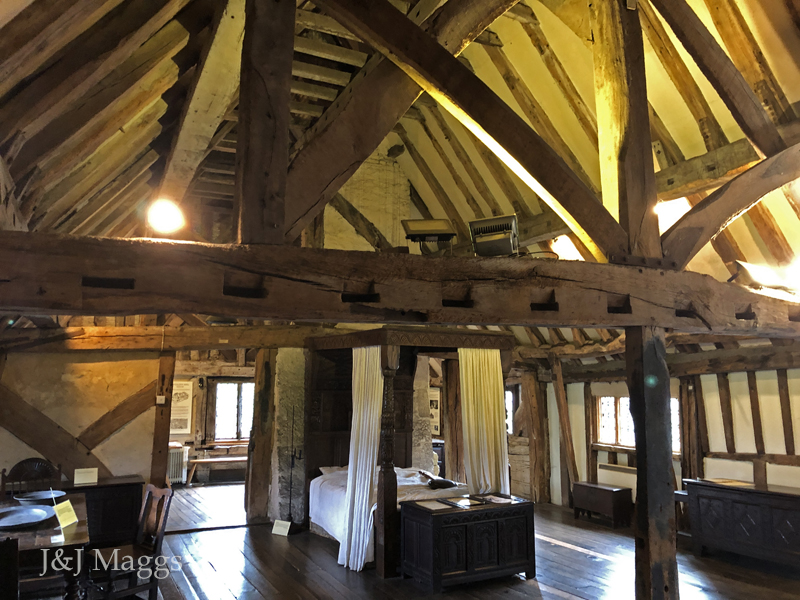
The spacious bedroom on the upper floor. Note the modern radiator visible through the door!

The well-appointed hearth

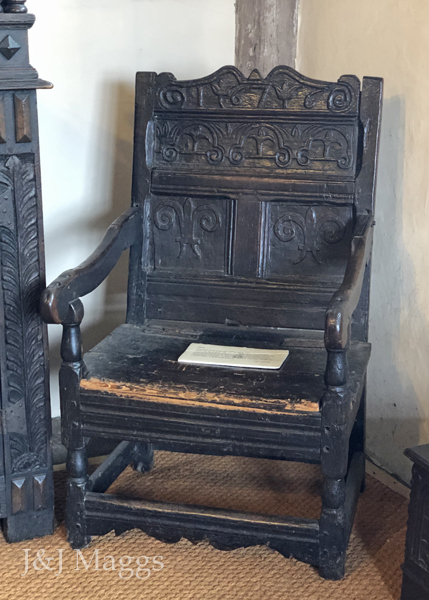
Two outstanding examples of the 17th-century oak furniture that fills the house
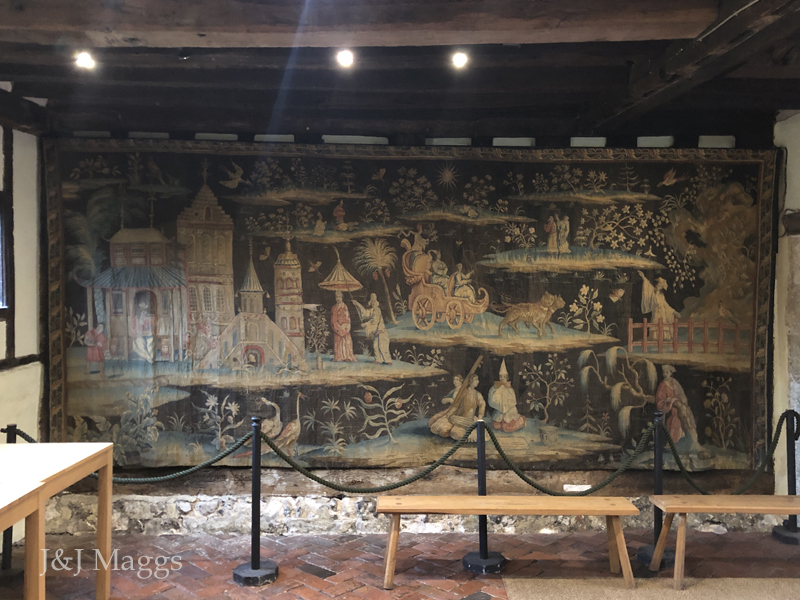
A large Soho tapestry, made in the London workshop of John Vanderbank in the 1690s
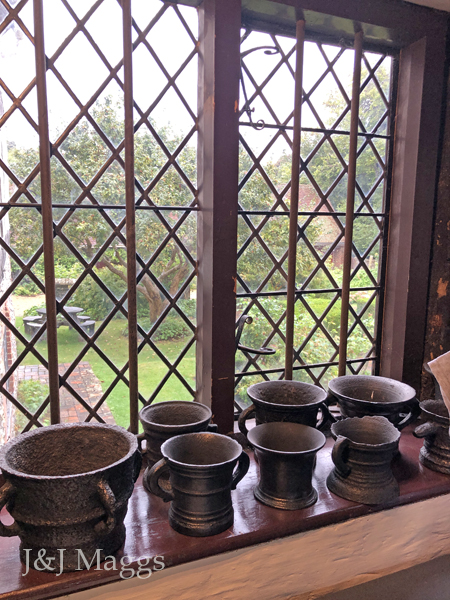
Early mortars

The garden
~ ~ ~ ~ ~ ~ ~ ~ ~ ~ ~ ~ ~ ~ ~ ~ ~ ~ ~ ~ ~ ~ ~ ~ ~ ~ ~ ~ ~ ~ ~ ~ ~ ~ ~ ~ ~ ~ ~ ~
We left the house and returned to the train station, where we used our return tickets to get back to London and our hotel by suppertime. Exhausted from our trans-Atlantic trip and the day’s travels, we bought sandwiches and dessert in the nearby Waitrose and were asleep before 9:00.
~ ~ ~ ~ ~ ~ ~ ~ ~ ~ ~ ~ ~ ~ ~ ~ ~ ~ ~ ~ ~ ~ ~ ~ ~ ~ ~ ~ ~ ~ ~ ~ ~ ~ ~ ~ ~ ~ ~ ~
16. Six Lives, the six wives of Henry VIII

On
Friday, September 6th,
after the kind of fitful sleep that we usually experience after the five-hour time
shift, we woke, ate breakfast in our hotel, and then hopped on the Piccadilly
Line again, this time continuing east to Leicester Square. We walked along
Charing Cross Road until we reached the National Portrait Gallery, where we
were hoping to view the exhibition Six
Lives, an epic showing of
paintings and other objects centered on the lives of Henry VIII’s six wives.
The show was in its final three days, and the website informed us that,
while there are no available entry times, “a limited number” of tickets
might be available at the door. We arrived well in advance of the museum’s
10:00 opening and waited near the front of the queue that stretched around
the corner towards Trafalgar Square. When the doors opened, we entered and
went directly to the ticket counter to inquire about tickets. We held our
breath until we were told that we could have tickets to the exhibition “if
we were able to wait 15 minutes.” We were in!
~ ~ ~ ~ ~ ~ ~ ~ ~ ~ ~ ~ ~ ~ ~ ~ ~ ~ ~ ~ ~ ~ ~ ~ ~ ~ ~ ~ ~ ~ ~ ~ ~ ~ ~ ~ ~ ~ ~ ~
Henry and His Court

Henry VIII
Oil on panel from the workshop of Hans Holbein the Younger, ca. 1537

Henry's armor for Field and Tournament, 1540
The massive proportions of his armor give an idea of what a large man he was.
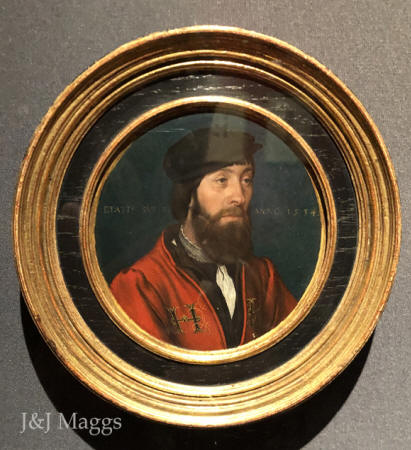

A couple in service at Henry VIII's court
Oil on panel by Hans Holbein the younger, 1534
A rare glimpse of the ordinary people
downstairs in the Tudor palace
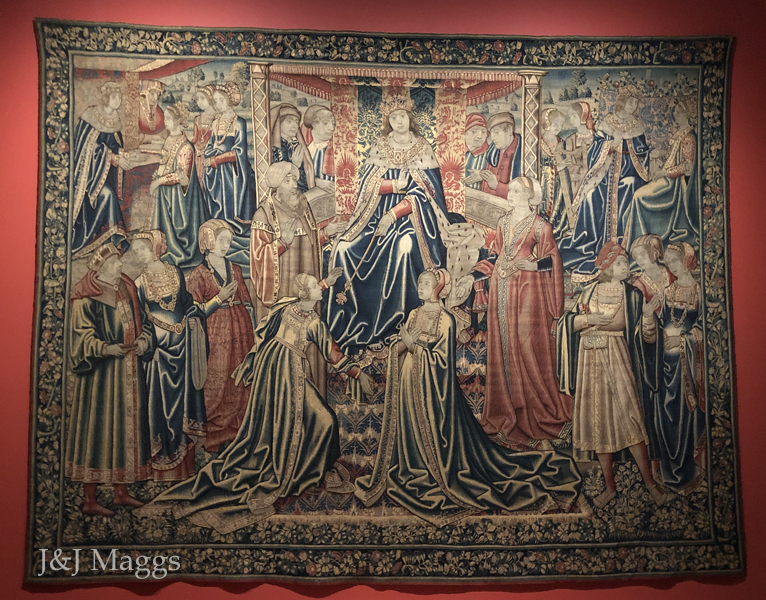
A large Flemish tapestry from the Royal collection, 1510 - 20
On loan from the Victoria and Albert Museum
~ ~ ~ ~ ~ ~ ~ ~ ~ ~ ~ ~ ~ ~ ~ ~ ~ ~ ~ ~ ~ ~ ~ ~ ~ ~ ~ ~ ~ ~ ~ ~ ~ ~ ~ ~ ~ ~ ~ ~
Catherine of Aragon, 1509 - 1533
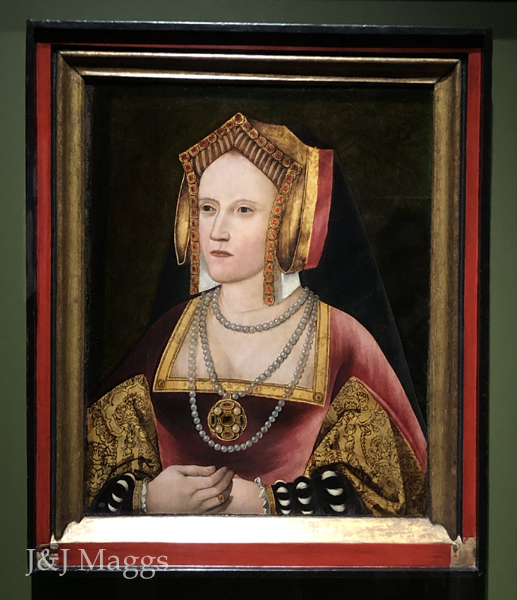
Katherine of Aragon
Oil on panel by an unidentified artist, ca. 1520

Henry around the age of twenty. After his brother Arthur's death, he married his widow, Katherine.
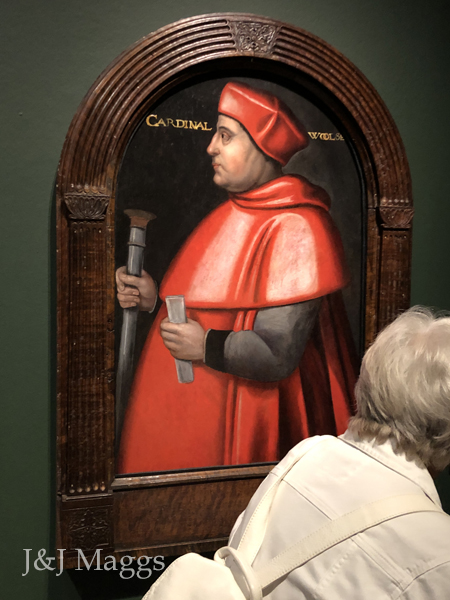
Thomas Wolsey, oil on panel by an unidentified artist.
Wolsey secured the annulment of Henry's twenty-four year marriage to Katherine.

Oil on canvas of the trial of Queen Katherine, as performed at Royal Covent Garden
Oil on canvas by Henry Andrews, 1831
~ ~ ~ ~ ~ ~ ~ ~ ~ ~ ~ ~ ~ ~ ~ ~ ~ ~ ~ ~ ~ ~ ~ ~ ~ ~ ~ ~ ~ ~ ~ ~ ~ ~ ~ ~ ~ ~ ~ ~
Anne Boleyn, 1533 - 1536

Anne Boleyn, by an unidentified artist, late 16th century
There is speculation that this posthumous portrait may have been painted to reinforce the legitimacy of Elizabeth I, though Anne Boleyn was never described as queen.

A sixteenth-century lute, standing in for Mark
Smeaton, the musician who testified to an affair with Anne.
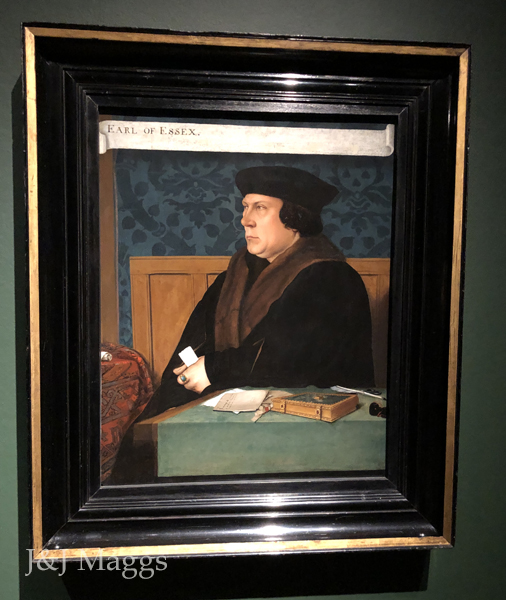
Thomas Cromwell, Earl of Essex, who arranged Anne's marriage to Henry.
It was Cromwell who later constructed the charge of adultery against Anne. She was arrested along with her brother George and five other courtiers and then beheaded.
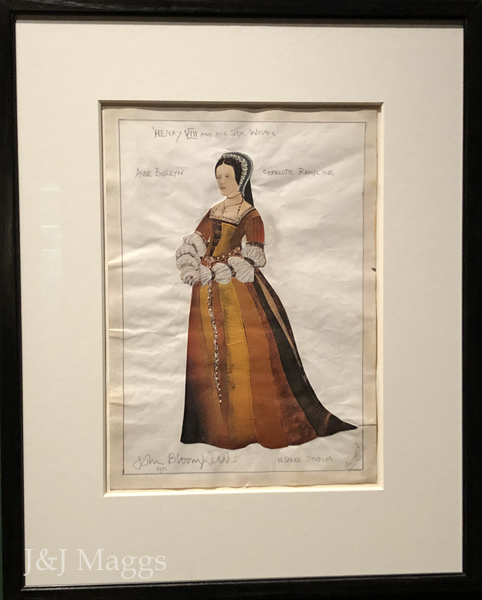
Costume designed for Charlotte Rampling as Anne Boleyn in the film Henry VIII and His Six Wives
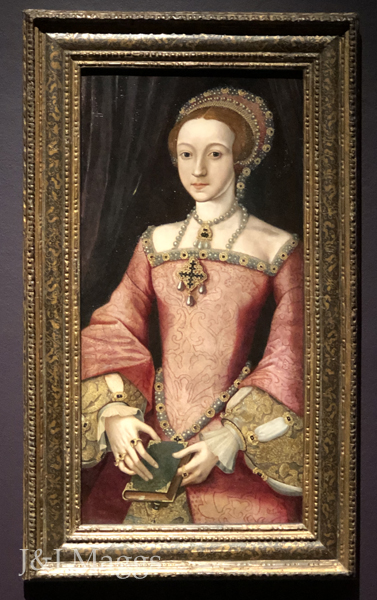
Princess Elizabeth, daughter of Henry and Anne, to become Elizabeth I
~ ~ ~ ~ ~ ~ ~ ~ ~ ~ ~ ~ ~ ~ ~ ~ ~ ~ ~ ~ ~ ~ ~ ~ ~ ~ ~ ~ ~ ~ ~ ~ ~ ~ ~ ~ ~ ~ ~ ~
Jane Seymour, 1536 - 1537
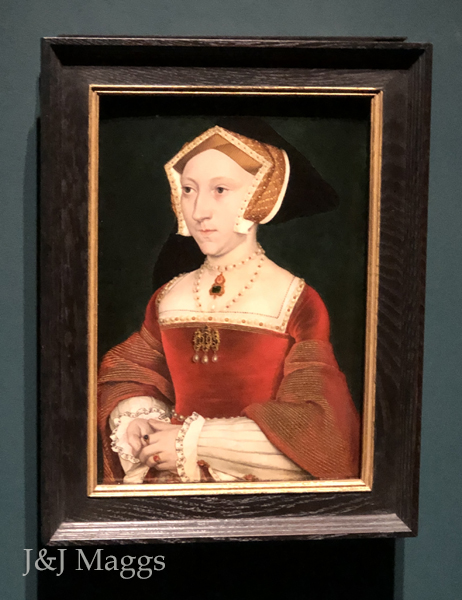
Oil on panel from the workshop of Hans Holbein the Younger, c. 1540
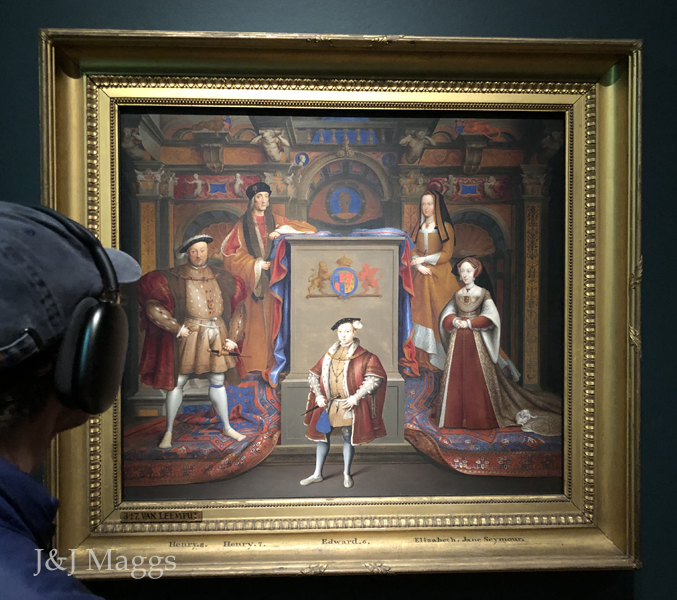
Henry VIII, Henry VII, Elizabeth of York, Jane Seymour and Edward VI as Prince of Wales
Oil on canvas (1669) after a painting by Hans
Holbein the Younger, 1537
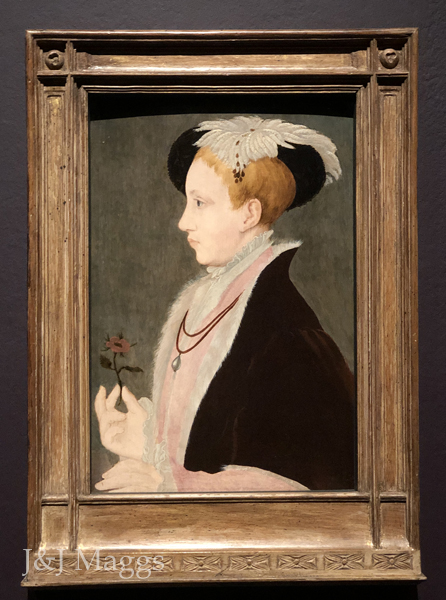
Prince Edward, by an unidentified artist, after William Scrots
Oil on panel, ca. 1546
~ ~ ~ ~ ~ ~ ~ ~ ~ ~ ~ ~ ~ ~ ~ ~ ~ ~ ~ ~ ~ ~ ~ ~ ~ ~ ~ ~ ~ ~ ~ ~ ~ ~ ~ ~ ~ ~ ~ ~
Anne of Cleves, 1540 - 1540
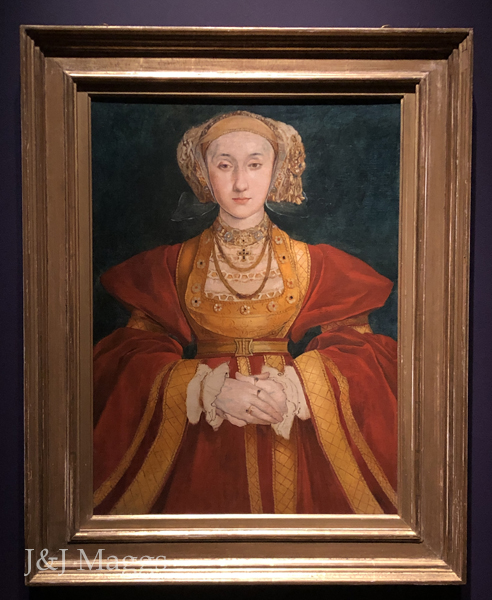
Anne of Cleves, Oil on canvas by Edgar Degas (ca. 1860 - 2) after Hans Holbein the Younger
Before becoming a renowned impressionist painter, Degas was registered as a copyist at The Louvre.
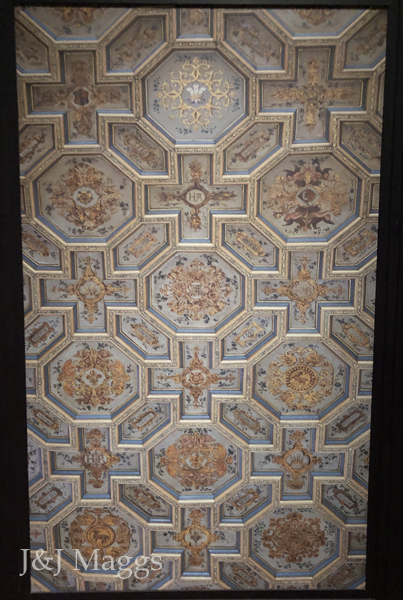
Anne's mottoes and badges and the names of her family's territories on the polychrome wood ceiling of the Chapel Royal at St. James's Palace, ca. 1540
~ ~ ~ ~ ~ ~ ~ ~ ~ ~ ~ ~ ~ ~ ~ ~ ~ ~ ~ ~ ~ ~ ~ ~ ~ ~ ~ ~ ~ ~ ~ ~ ~ ~ ~ ~ ~ ~ ~ ~
Katherine Howard, 1540 - 1542
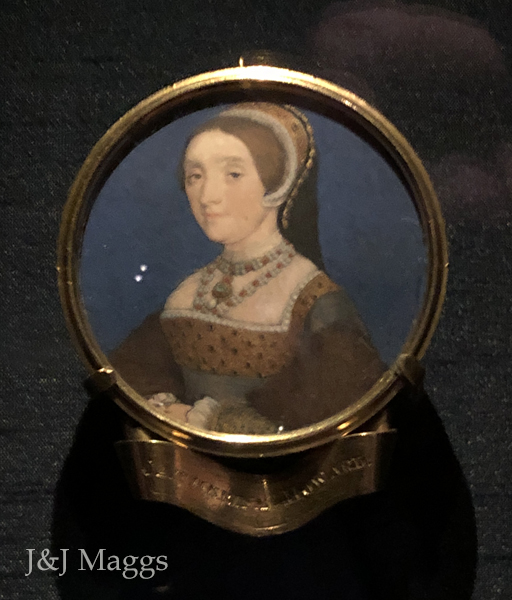
Thought to be a portrait of Katherine Howard, whose marriage to the aging Henry was short-lived. Married in July 1540, she was beheaded in February, 1542.

Henry VIII, by an unidentified artist, after Hans Holbein the Younger.
Late 16th century, after a work of ca. 1542.
~ ~ ~ ~ ~ ~ ~ ~ ~ ~ ~ ~ ~ ~ ~ ~ ~ ~ ~ ~ ~ ~ ~ ~ ~ ~ ~ ~ ~ ~ ~ ~ ~ ~ ~ ~ ~ ~ ~ ~
Katherine Parr, 1543 - 1547
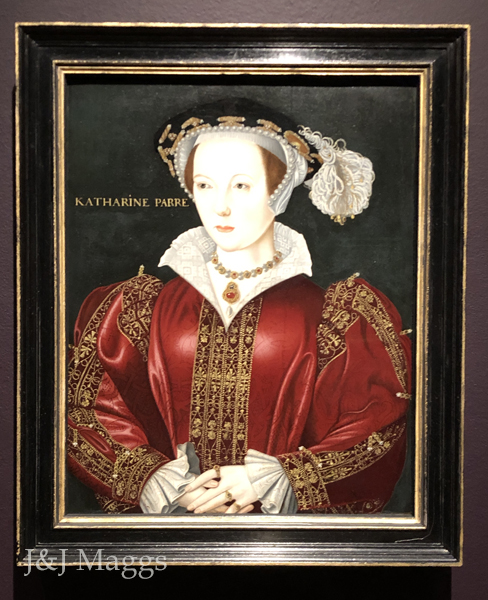
Katherine Parr, by an unidentified artist, possibly after William Scrots
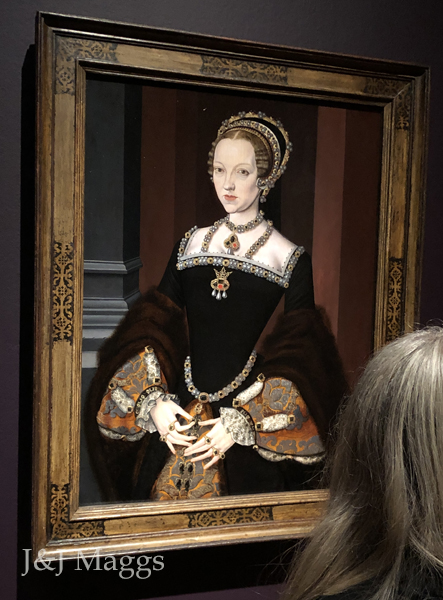
Katherine Parr. Oil on panel, attributed to Master John, ca. 1547
Catherine survived Henry; she died in 1548.
~ ~ ~ ~ ~ ~ ~ ~ ~ ~ ~ ~ ~ ~ ~ ~ ~ ~ ~ ~ ~ ~ ~ ~ ~ ~ ~ ~ ~ ~ ~ ~ ~ ~ ~ ~ ~ ~ ~ ~
After leaving the National Portrait Gallery, we walked across Charing Cross Road to have lovely lunch in the crypt of the Church of St. Martin-in-the-Fields. If you’re in the area, this is a great place for lunch; it has impressive ambiance, and the food is tasty and reasonably priced. And it benefits St. Martin’s.
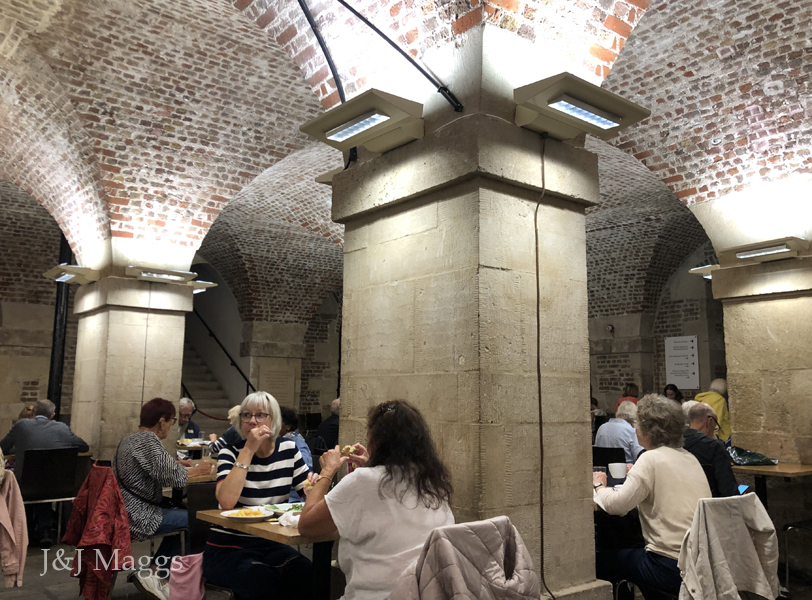
Lunchtime in the crypt
~ ~ ~ ~ ~ ~ ~ ~ ~ ~ ~ ~ ~ ~ ~ ~ ~ ~ ~ ~ ~ ~ ~ ~ ~ ~ ~ ~ ~ ~ ~ ~ ~ ~ ~ ~ ~ ~ ~ ~
We returned to the National Gallery, where we spent a couple of hours visiting some of our favorite rooms.
Before exhaustion and "museum legs" set in, we managed to take a few images. Here are a couple of them.
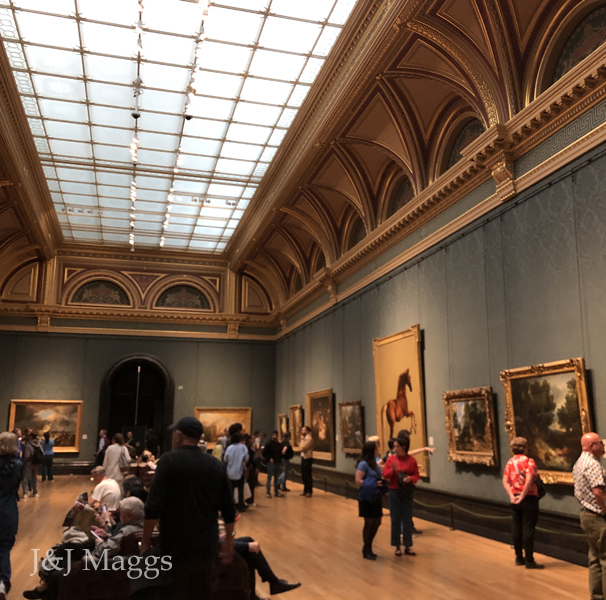
One of the museum's several large galleries.

Interior, 1899
Vilhelm
Hammershøi (1864 – 1916)

In the square in front of the museum is this statue of George Washington, a replica of the one in Richmond commissioned by Jefferson.
It was placed here in 1921, but the soil on which it sits was imported from America to satisfy Washington's wish to "never set foot on British soil again."
We retraced our steps up Charing Cross Road and took the Tube home. After resting a bit, we walked ten blocks to another favorite Kensington pub, The Drayton Arms, where we ordered from a delicious prix fixe menu, which we washed down happily with another of our favorite beers, Timothy Taylor’s Landlord. We returned home and went to bed. Portobello in the morning.
Before the
double blows of gentrification and Covid, Portobello Road Antiques Market
was a bustling trade venue, which began early on Saturday morning and, for
most serious buyers, was essentially over by mid morning, when the hordes of
tourists descended on the narrow road, making purposeful movement nearly
impossible. On those former Saturdays, we went without breakfast to be among
the first in line at Roger’s Gallery, which opened at 7:00. Now Roger’s is
an empty storefront, and our favorite dealers, dispersed about the market,
don’t open their own stalls until around 8:00.
So, when we visited Portobello on
Saturday, September 7
we left our hotel after breakfast to visit our three favorite London
dealers. While we were at the first dealer’s stand, the second appeared,
examined a few pieces in his booth, chatted briefly with the three of us,
and told us that she wasn’t standing this morning, because she was doing a
show on Sunday. Since we’d been planning to shop at the Sunday show, we told
her that we’d see her in the morning. We learned later in the day that
dealer #3 was quite ill and unable to be in London. Sadly, we left
Portobello before 10:00 with only two small bits in our bag. We took the
Underground back to our hotel.
Another dealer, from whom we had regularly
bought on Portobello Road now meets us in our hotel room each time we’re in
London. We’d made such an arrangement for this afternoon, and after a simple
lunch en suite,
we enjoyed our private showing. We looked at the things chosen for us to
have first look at and, as usually, approved of the selection. In the end,
despite our disappointing morning, this Saturday was an excellent day of
buying.
As if to celebrate, we treated ourselves to an
outstanding Greek meal at Halepi,
on Leinster Terrace, a block above Bayswater. Years ago, it had been
recommended to us by fellow dealers, and it has never disappointed in the
quarter century we’ve been intermittent “regulars”. We learned on this trip
that AAA claims Halepi is “the best Greek restaurant in the world”. Right or
wrong, the family-run Halepi deserves the highest commendation for
consistent quality and the ambiance of a local Greek restaurant in the
middle of London.
On
Sunday morning, September 8th
we re-packed our bags to leave London for a time, depositing one suitcase at
The Montana until our return in eleven days. After a full breakfast, we
hailed a taxi outside the hotel and were taken to The Royal Horticultural
Halls for the monthly antiques fair that is held there. The show, referred
to as “The Horti”, features a large roomful of very good dealers, many
selling pieces that are quite affordable for us. Because prices are
reasonable, regular buyers attend in droves, filling the hall with a bustle
we haven’t seen since before Covid. We’ve been to The Horti several times,
and we now build our itineraries around it. After about an hour, we left the
fair and were driven to Heathrow by our friend Natasha, who dropped us off
at Hertz to pick up the Kia Sportage that would be our carriage for the next
two weeks.
~ ~ ~ ~ ~ ~ ~ ~ ~ ~ ~ ~ ~ ~ ~ ~ ~ ~ ~ ~ ~ ~ ~ ~ ~ ~ ~ ~ ~ ~ ~ ~ ~ ~ ~ ~ ~ ~ ~ ~
CLICK HERE for Part V - The Cotswolds
~ ~ ~ ~ ~ ~ ~ ~ ~ ~ ~ ~ ~ ~ ~ ~ ~ ~ ~ ~ ~ ~ ~ ~ ~ ~ ~ ~ ~ ~ ~ ~ ~ ~ ~ ~ ~ ~ ~ ~
Click HERE to visit the J&J Maggs Antiques home page.